First-Gen Camaro (1967–69): The one that picked a fight
With the Camaro nameplate retiring soon, we’re honoring the beloved two-door with a series of love letters, fun lists, and memories over the next several weeks. You can follow along by clicking here.
Let’s not pretend the car we’re about to celebrate over the next week or so is perfect. In fact, the Camaro has always been flawed and beset with contradictions. It’s a sporty car, sometimes a very capable one, and yet many built over the decades had humble four- and six-cylinder engines and spent their lives as workaday commuters. It’s built by America’s largest automaker but is the consummate underdog, always playing catch-up with its crosstown rival, the Mustang, and scrapping for development dollars with its big brother, the Corvette.
The Camaro has, for most of its existence, lived in the crosshairs of the suits, who sent it into cold storage in 2002 and are doing so again at the end of this year. (Don’t think for a second, though, that it won’t be back.) To be even more blunt: The T-tops often leaked, the doors were usually too heavy, and the view out was almost always obstructed.
No matter, we love Camaros—have owned them, wrenched on them, and generally gotten up to no good in them. Judging by Hagerty data, you feel the same: It’s the fourth most popular car we insure. Our affection has a lot to do with all those “problems.” Many performance cars, especially nowadays, aim for an anodyne version of perfection that only a few can afford. The Camaro is for the rest of us—and it’s always ready to party. That in mind, let down your hair and come with us for a deep dive into what, exactly, makes the Camaro so bitchin’. We start at the beginning…
***
First Generation (1967–69)
The one that picked a fight
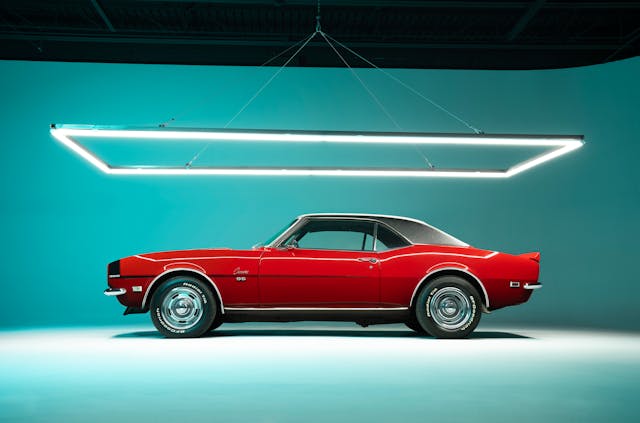
It was the worst kept secret in Detroit in the summer of 1966. Ever since the arrival of the spectacularly successful Ford Mustang two years earlier, all eyes had turned to Chevrolet and its expected counterattack. Word had gone around that the Bowtie’s answer, the so-called F-car, would be about the same size and price as the Mustang and that it would be christened the Panther. Ford even ginned up a mocking TV ad in which a feline panther unsuccessfully chased a Ford Mustang, and Ford PR reps would quip to any reporter who would listen that Chevy’s blatant knockoff should really be called the Parrot.
On Tuesday, June 28, 1966, newly promoted GM vice president and Chevrolet general manager Elliot Marantette “Pete” Estes made the official announcement from Detroit’s Statler-Hilton hotel over a coast-to-coast conference call with 200 reporters gathered in 14 cities. Backed up by a boisterous squad of Michigan State University cheerleaders, Estes triumphantly announced that Chevy’s new Mustang-beater, due in showrooms that September, would be called—well, uh, it sounded something like “ka-MAIR-oh.”

The Los Angeles Times reported that “a 30-member press gathering at the Beverly Hilton reacted to Estes’ announcement of the name with silence.” To the north, the San Francisco Examiner stated that journalists’ first reaction there was, “‘He must be kidding.’ The name sort of stirs the imagination as much as a wet noodle.”
Estes said that he settled on Camaro only that morning at 10 o’clock, because it both upheld Chevy’s C-centric naming convention—Corvair, Corvette, Chevelle, Chevy II—and in colloquial French loosely translates as “comrade,” (“…a word that also has its connotations,” said a smirking New Hampshire paper).
“We chose a name which, besides being lyrical and new, also reflects the purpose of the car. The real mission of the auto is to be a close companion of its owner, tailored to his or her individual tastes,” said Estes. Some observers also suggested that GM’s recent smackdown in the Ribicoff traffic-safety hearings that grew out of Ralph Nader’s 1965 book, Unsafe at Any Speed, and GM’s hiring of private investigators to discredit Nader had scared GM away from aggressive names that “subtly encourage speed by exciting images of power and violence,” according to one columnist at the time.


So, comrade Camaro it was, although bewildered French speakers said they had never heard the word before, and the entire English-speaking world had to be trained on how to pronounce it. “CA-maro,” and not “caMARo” or “camaRO.” Ford PR reps chortled—again, to anyone who would listen—that a Spanish word very much like it refers to a type of shrimp.
They had every reason for swagger. In just two years, Ford had pumped out more than a million Mustangs, saving the mid-1960s from being an otherwise dreary period for Detroit of repeated factory strikes, encroaching foreign competition, and soft sales. Additionally, the Mustang proved that there was a huge untapped market for what the industry called “specialty cars.” “When you have a winner, you have to expect competition,” mused Ford Division general manager Don Frey, who at the time lived across the street from Estes. “Imitation continues to be the sincerest form of flattery.”
Contrary to expectations that were elevated by the fiberglass-bodied Corvette and the rear-engine Corvair—as well as the front-drive ’66 Olds Toronado and the over-head-cam Pontiacs—there would be nothing very radical about the all-steel, rear-drive 1967 Camaro save for the hideaway headlights that disappeared behind motorized panels in the grille of RS editions. Chevy was aiming hard for a circa-$2400 base price, considered critical to effectively challenging the Mustang, and it would not be deterred by any of the techno-wizardry then pouring forth from GM R&D.

According to Chevy historian Michael Lamm, GM’s See-the-USA division committed to building a Mustang competitor as early as August 1964. It was a rush job on a shoestring, a sporty car to be grafted onto the bones of the Chevy II/Nova sedan (as was the Mustang an offspring of the Falcon). Bill Mitchell, who in 1958 succeeded Harley Earl as GM’s design chief, oversaw the styling of that first Camaro, code-named XP-836 and executed in Chevrolet Studio 2 at GM’s Technical Center in Warren, Michigan, where it was assigned to division stylist Henry Haga.
From the earliest clays, the Camaro’s shape departed from that of the straight-edged Mustang, brooming aside the midcentury-modern convention of flat fender lines and slab sides in favor of rounded haunches and a sloping nose and tail, pulling in elements of both the Corvette and Corvair. As with other sporty cars of the era, the ’67 Camaro’s front and rear fender lines swelled upward to peaks directly above the top of the wheel arches before tapering off. That little trick, called “Coke-bottle styling,” had made period designs from the Ford GT40 to the Lamborghini Miura to the ’68 Dodge Charger look good.
Although the Camaro’s 108.0-inch wheelbase was identical to the Mustang’s, its sedan underpinnings—including the high cowl and conservative dash-to-axle ratio—meant the first-gen Camaro would never be as long, low, or sexy as designers would have liked. Modern collectors might strenuously disagree with him, but Mitchell was a bigger fan of the second-gen 1970 Camaro, saying later that the ’67 was the hasty product of a committee.
Unlike the fully unitized Mustang, which had a frame welded to its body, GM engineers designed the Camaro around a semi-unitized concept, meaning everything forward of the firewall was supported by a bolt-on frame while everything aft of that was, as on the Mustang, integrated with the body. That engineering decision was unwittingly a gift to future restorers and customizers, who could easily swap out the Camaro’s front subframe for a new one or, in more recent years, an all-aluminum pro-touring setup.

Toying with many ideas, including a two-seat roadster and a two-door Nomad-style wagon, Chevrolet eventually settled on two straightforward body styles, a notchback coupe and a convertible, available with six-cylinder or V-8 and various trim levels. People had admired the look of fastbacks since they went mainstream in the late 1930s, but they almost universally plunked their money down on cars with protruding trunks. The 1966 Mustang notchback outsold the fastback by a rate of 14 to 1. The first Dodge Charger in 1966 was a daring fastback—and a colossal failure. The only real exception was the Barracuda, which Plymouth broadened in 1967 with a notchback to join the existing fastback and convertible. The Cuda fastback held its own, selling about the same as the notchback—though all of Barracuda’s sales in 1967 didn’t add up to two months’ worth of Mustang sales. Chevy was aiming higher, and it didn’t want the distraction of a fastback.
Ultimately, however, the first Camaro couldn’t beat Mustang in the showroom. Chevy’s two plants in Norwood, Ohio, and Van Nuys, California, churned out around 221,000 units in ’67, rising to 243,000 in 1969, when even a fading Mustang sold almost 300,000 units. But as the turbulent 1960s drew to a close, GM was undaunted; the Camaro and its sister car, the Firebird, were established enough in three short years to be worthy of a complete reinvention for the next decade.
***
Check out the Hagerty Media homepage so you don’t miss a single story, or better yet, bookmark it. To get our best stories delivered right to your inbox, subscribe to our newsletters.
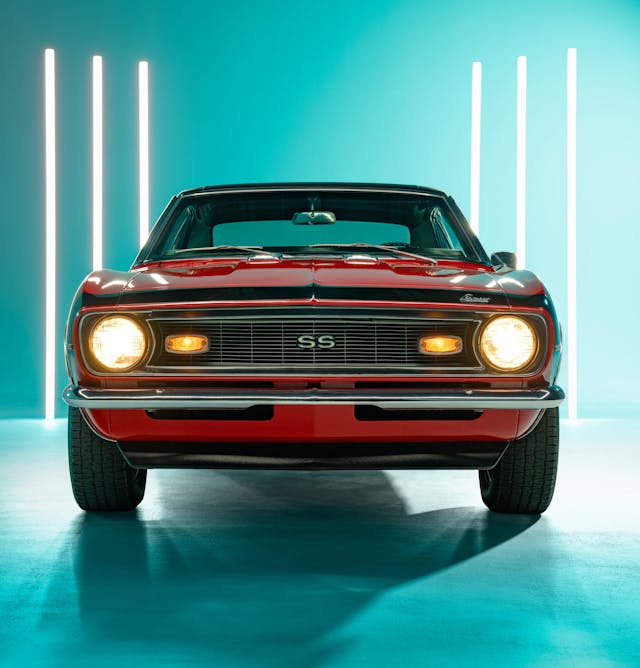
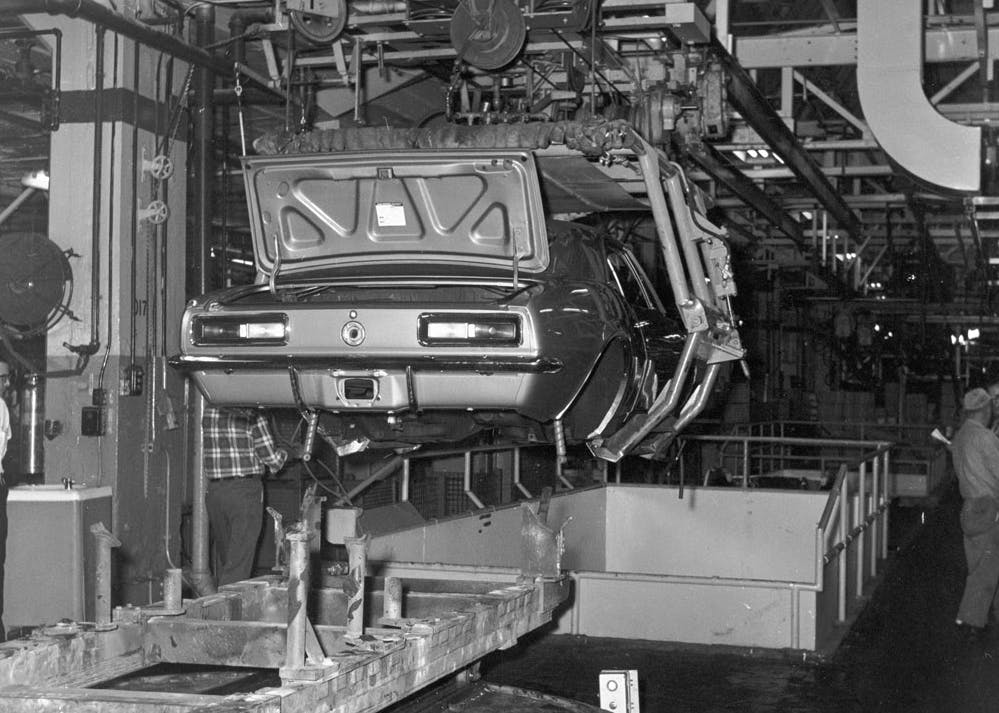
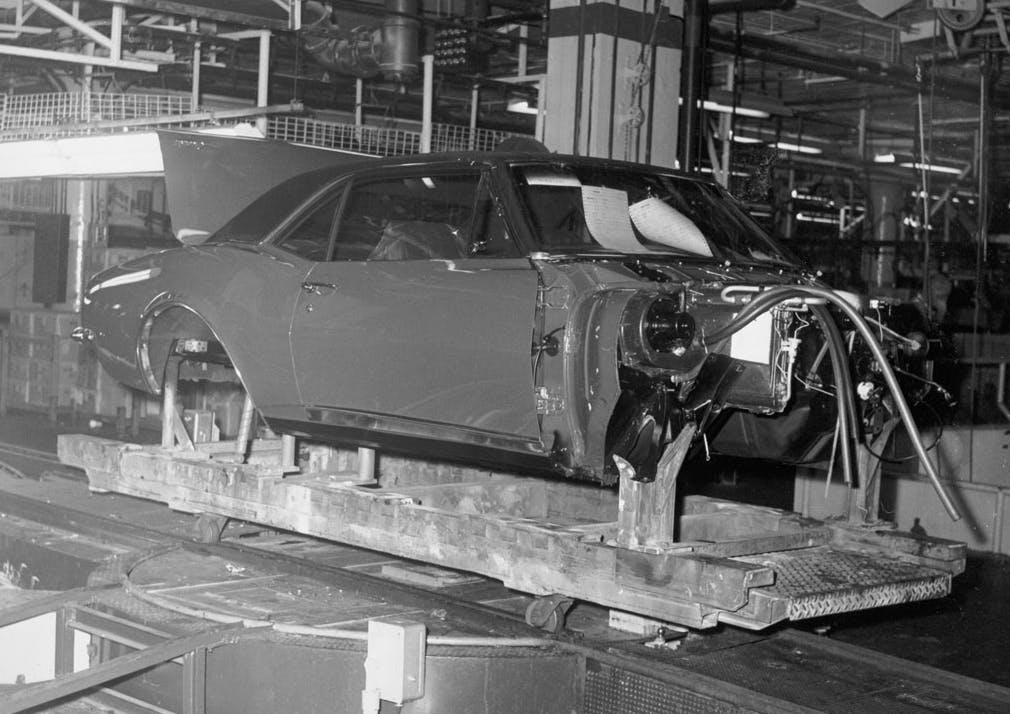
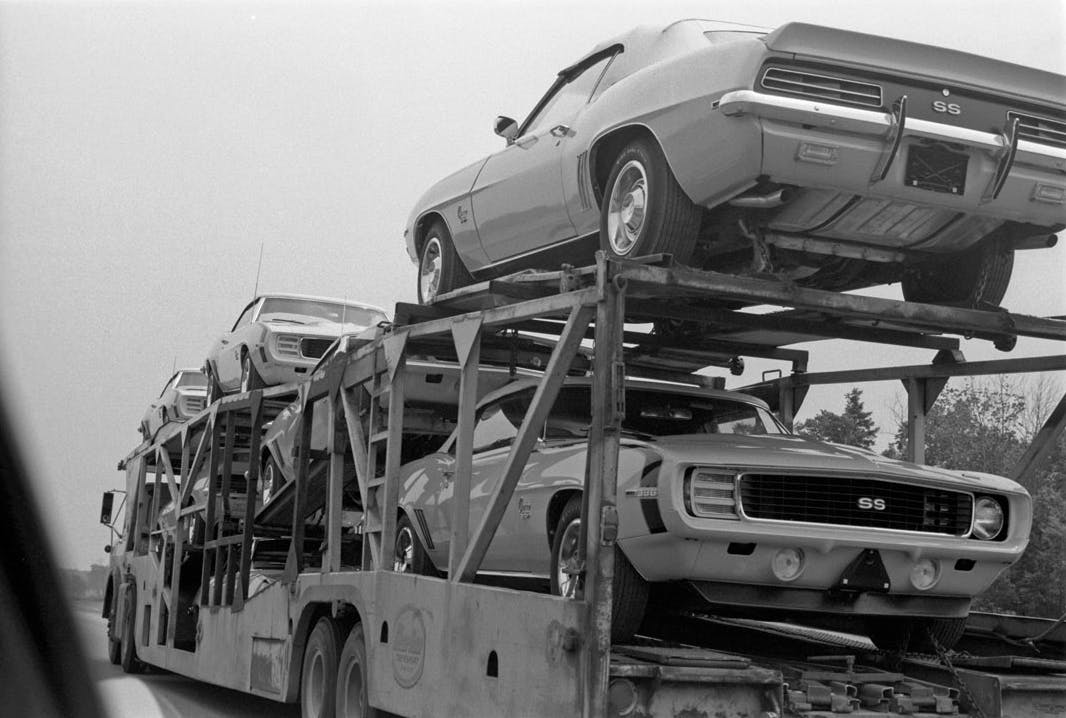


Chevrolet cribbed the design from the ’63 Lusso, should’ve paid Ferrari royalties. Just as the ’55 Chevy “borrowed” the current Ferrari’s grille.
Even more likely the motor was shut off before the door finished closing.
As a 20yr. old USAF airman on his way to SEA, in Sept 1967, I bought a Madiera Maroon 327 Camaro with a rare Gold interior and console for my wife to drive while I was gone. It was built in Dec of ’66 and used as a demonstrator. 57 years later I am still happily married to my wife and driving that Camaro. I had to put disc brakes on it, dual exhaust and a four barrel carb. but its still got the original 327 drive train, numbers matching. And I’ve kept all the original parts, because I’m a purist.And if Gary Bechtold grew up in upstate NY. Please email me.